Blog
Helping Humans and Their Animals Stay Together Through Behavioral Training
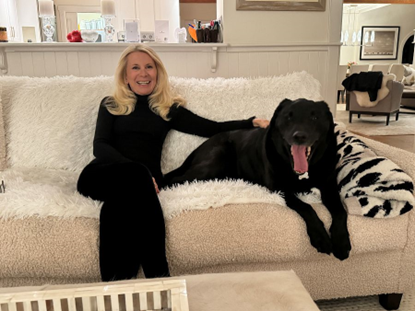
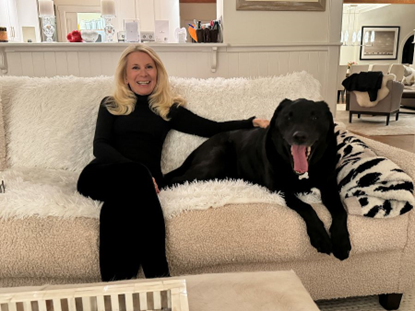
Jameson Humane’s Goal of Helping Humans and Their Animals Stay Together Through Behavioral Training
The Jameson Humane website describes some of the challenges people may encounter in their relationships with animals: “The bond between humans and our animals is deep and meaningful. Like all relationships, there can be difficult periods. Many animals are surrendered to their local shelters due to these rough patches, which is stressful and heartbreaking for everyone. Oftentimes during these periods, there is difficulty managing behavioral challenges and resources can be tough to find, or financially out of reach. . . . Maybe there’s been a recent move or a change in schedule/routine, or there’s difficulty/stress at mealtime (resource guarding), a new animal or human in the home, or you ‘just can’t get your dog to calm down.’”
Love alone is often not enough to produce the sort of calm, respectful, and gentle behavior we would like to see in all of our animals (or, for that matter, in our human loved ones). People and their animals sometimes need help to establish a relationship of serenity and lasting companionship. And sometimes people feel like they will have no choice but to give up their animals unless they can get the help they need. As a way to provide such assistance, in March 2024, Jameson Humane established the Joann Serafini Training & Behavioral Support Program (TBSP). TBSP provides people with training tools and strategies to modify the behavior of their animals and – often more to the point – their own behavior, in order to improve their relationship with their animals and to improve how their animals interact with family, friends and strangers.
Word has spread fast about the availability of TBSP assistance through referrals by community members and other humane services providers, social media posts, and word of mouth. And some people, who had no prior knowledge of the existence of TBSP, have become aware of the availability of the TBSP when they contacted Jameson Humane to request help in rehoming an animal.
With the generous support provided by the Program’s sponsor, Joann Serafini, and with the skilled guidance provided by Jameson’s Behavior and Training specialist, Melissa Bush, in just its first 9 months through the end of 2024, the Program saved 33 dogs and cats from being sent to shelters and allowed them to stay in the home with their human caretakers. That represents a 95 percent success rate!
How TBSP Works
To seek TBSP services, people can directly email Melissa Bush at melissa@jamesonrescueranch.org or use the Jameson website’s Help Center resources at https://www.jamesonanimalrescueranch.org/resources
Once a request is made, Jameson contacts those seeking help to ask certain preliminary questions and to ask them to fill out a questionnaire about the animals and the behavioral issues they are encountering. (There are separate questionnaires for cat and dogs.) Melissa Bush then coordinates the scheduling of a complimentary 90-minute consultation. It is preferred to have the consultation in person if possible but Zoom sessions are easily provided to those who live out of town or otherwise cannot meet in person.
During the consultation, caretakers are provided with strategies and techniques to help modify the behavior of their animals and, if necessary, their own behavioral patterns. They are also given suggestions as to helpful training equipment and supplies that the caretakers should acquire (e.g., harnesses, leads, walking equipment, and enrichment items such as Snuffle Mats, Licky Mats and Kongs) for the recommended course of behavioral training. On a case-by-case basis, if the caretakers cannot afford the supplies or equipment recommended, Jameson Humane will consider donating what’s needed. Jameson then follows up with the caretakers around a week later to see how the strategies and training techniques helped. Jameson will also consider follow-up appointments, if needed, on a case-by-case basis.
If any unusual training or behavioral issues are presented that go beyond even Melissa Bush’s considerable knowledge and expertise, Jameson Humane has arranged with an outside trainer to be available (at a discounted rate) for additional consultation.
Examples of Success
TBSP’s first 10 months have seen remarkable results. Among the many success stories are the following accounts from animal caregivers:
- Art and Kathleen Morgan found themselves at “an impasse” with their adorable labradoodle Louie, who seemed to be a “ball of anxiety.” With the advice and strategies provided in the TBSP consultation, the Morgans found ways to calm Louie and to alter the dynamics of their relationship. They reported that Louie was able to “settle into [becoming] the loving companion they knew he could be.”
- Another family reported success in modifying the behavior of their puppy Lola (pictured below so relaxed after training): “We were feeling overwhelmed by some behavioral challenges with our puppy. Melissa was not only super helpful with her training expertise, but also compassionate and kind to us and our dog. She obviously cares about the welfare of both animals and people a great deal!”
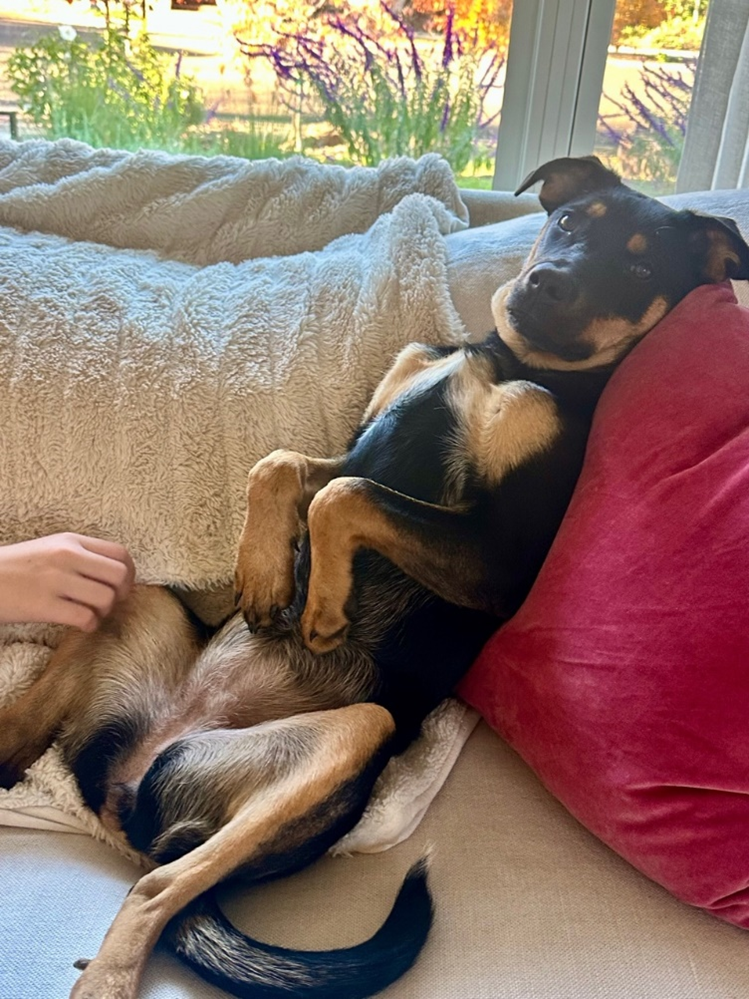
TBSP Coordination by Melissa Bush
Jameson Humane, TBSP, and its clients are benefitted greatly by coordination of the Program by longtime Jameson staff member Melissa Bush. Melissa holds a biology degree with an emphasis on vertebrate anatomy and physiology. Her career in the world of animal care and training includes:
- Served as a Veterinary Assistant for 1.5 years
- Volunteered with Los Angeles Golden Retriever Rescue
- Volunteered with San Diego Senior Dog Rescues
- Volunteered with Jameson Humane (before becoming an employee)
- Studied under multiple, skilled dog trainers to increase knowledge, learn more techniques, and expand her perspective
- Expanded her knowledge through animal-focused studies, cat/dog nutrition studies, cat/dog behavior studies, cat/dog medical studies, and cat/dog veterinary webinars
- Has served as a Professional Pet Care Provider for 15 years
- Currently obtaining Fear-Free Certification for both Training and Pet Sitting
The Generous Sponsorship of TBSP by Joann Serafini
Jameson Humane and the broader community are grateful to Joann Serafini for her sponsorship of TBSP. An April 7, 2024 news article (excerpted below), as published in Napa Valley Features, described Joann’s background and generosity:
“Joann Serafini grew up in upstate New York and had a successful career in television and movies, advertising and telecommunications before ever contemplating a life in wine.
“Serafini first came to California in the 1980s and to Northern California in 1990, settling in Danville for her career. Along the way she met and married the love of her life, her late husband Don Ross, an aerospace engineer who had worked on NASA’s Apollo mission and was a huge lover and collector of wine.
“Together they moved up to St. Helena in 2003 to be part of the wine community. With their home surrounded by cabernet sauvignon grapevines, it didn’t take long before they started plotting a winery of their own, and Shibumi Knoll Vineyards was born . . ..
“Serafini was widowed in 2016. Throughout it all, she has always had dogs by her side, namely black labs, who get their own photos and bios on the winery website. . .. ‘Wine and dogs go hand in hand,’ she says.
“So do dogs and generosity. Having met Monica Stevens through the wine business, Serafini has long been a supporter of Stevens’ animal welfare organization Jameson Humane. Serafini has now helped create and fund a new program, the Joann Serafini Training & Behavior Support Program.
“‘I’m a huge outdoors person, and I love nature and animals, . . . I’m passionate about dogs especially. I do believe they are unconditionally loving, beautiful creatures, angels put on earth. They do amazing things; they save lives . . .. I’m so happy Jameson is here to support animals. There’s such a need.’”
Here's a photo of Joann with her beloved black lab, Balthazar (aka Bali) Ross:
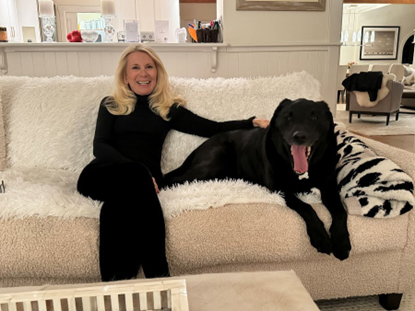
Please Make a Donation to Support TBSP
Jameson Humane would be so grateful for your donation in support of TBSP in any amount. Please select the preferred donation method through this link:
https://www.jamesonanimalrescueranch.org/donate/donation
Article by Jeff Richard, Jameson Humane Volunteer
Jameson Humane Kindly Requests Your Donations to Support Continuation of Vital Assistance to People in the Community For Their Care of Animals
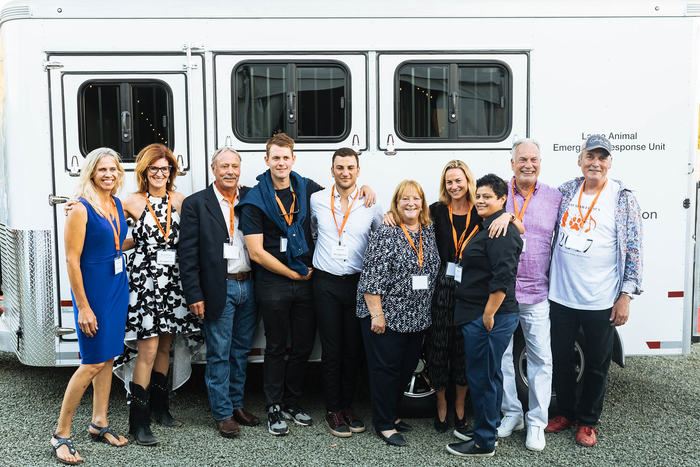
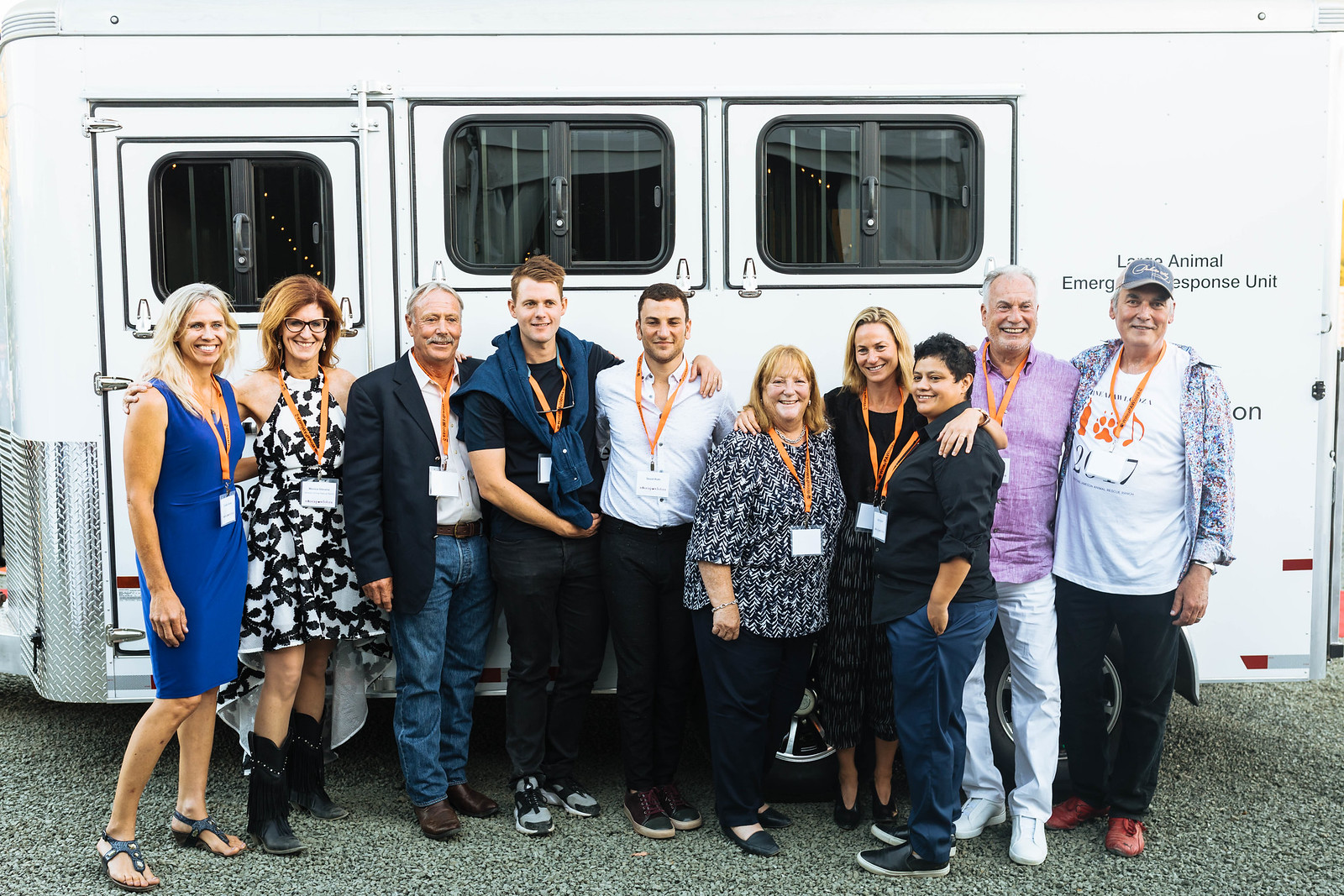
By Jeffrey Richard, Jameson Humane Volunteer
Jameson Humane is widely known for the services it provides directly to animals – such as life-saving rescues and subsequent physical, medical, and emotional care. But Jameson also does much more than that, by meeting the human needs of people in the community that are critical to their own ability to care for animals. Nine years ago, shortly after the founding of Jameson Humane in 2014, Monica and David Stevens launched an initiative to meet such human needs, known as the Community Animal Assistance Program (“CAAP”). CAAP provides financial grants and other assistance to animal caretakers around the country! As reflected by the success stories below, CAAP has positively impacted the lives of many hundreds of humans and their beloved animals by assisting them to overcome financial obstacles to supporting and caring for their animals.
In founding CAAP, Jameson saw that the need for the animal rescue and life-saving veterinary services that it and its sister organizations provide could be greatly reduced if the underlying causes of animal neglect and abandonment that lead to the need for emergency rescues could somehow be addressed and resolved. The fact is that these causes are known and can be tackled if the reach of programs such as CAAP can be increased through generous donations and through publicity to broaden public awareness of its availability.
CAAP was created with the overriding goal of enabling people and the animals they care for to stay together. With the generous and compassionate support of animal lovers, Jameson has been able to advance that goal around the county by providing financial aid for veterinary care, expansion of desperately needed low cost or free spay and neuter services, facilitating the rehoming of animals whose humans can no longer keep or care for them adequately, and assisting domestic violence survivors and their animals, just to name a few of the good works of CAAP. And all of these efforts have reduced, and will continue to reduce, the need for animal rescues or euthanasia.
[We should also note that Jameson has another outstanding program called Senior Citizen Pet Wellness (SCPW), which focuses on providing assistance to seniors in the Napa Valley who have animal companions. The goal of SCPW is the same as RFFCAAP: enabling humans and their animals to stay together! SCPW assists senior citizens by providing pet food and pet supplies (including flea medication) upon request, by making arrangements for their dogs to be walked, by helping out with grooming and access to veterinary care, and by putting on wellness clinics at senior living communities and facilities. Undoubtedly, SPCW will be the subject of an upcoming blog article on this site!]
Jameson is rightfully proud to celebrate the success of CAAP through these past 9 years. And Jameson is grateful to all of the many donors who have supported the CAAP grant program. In particular, Jameson gives special thanks to the Roth Family Foundation for its steadfast support throughout the past decade. Jameson recently recognized the Roth Foundation’s generous backing of CAAP by renaming the program as the Roth Family Foundation Community Animal Assistance Program (RFFCAAP).
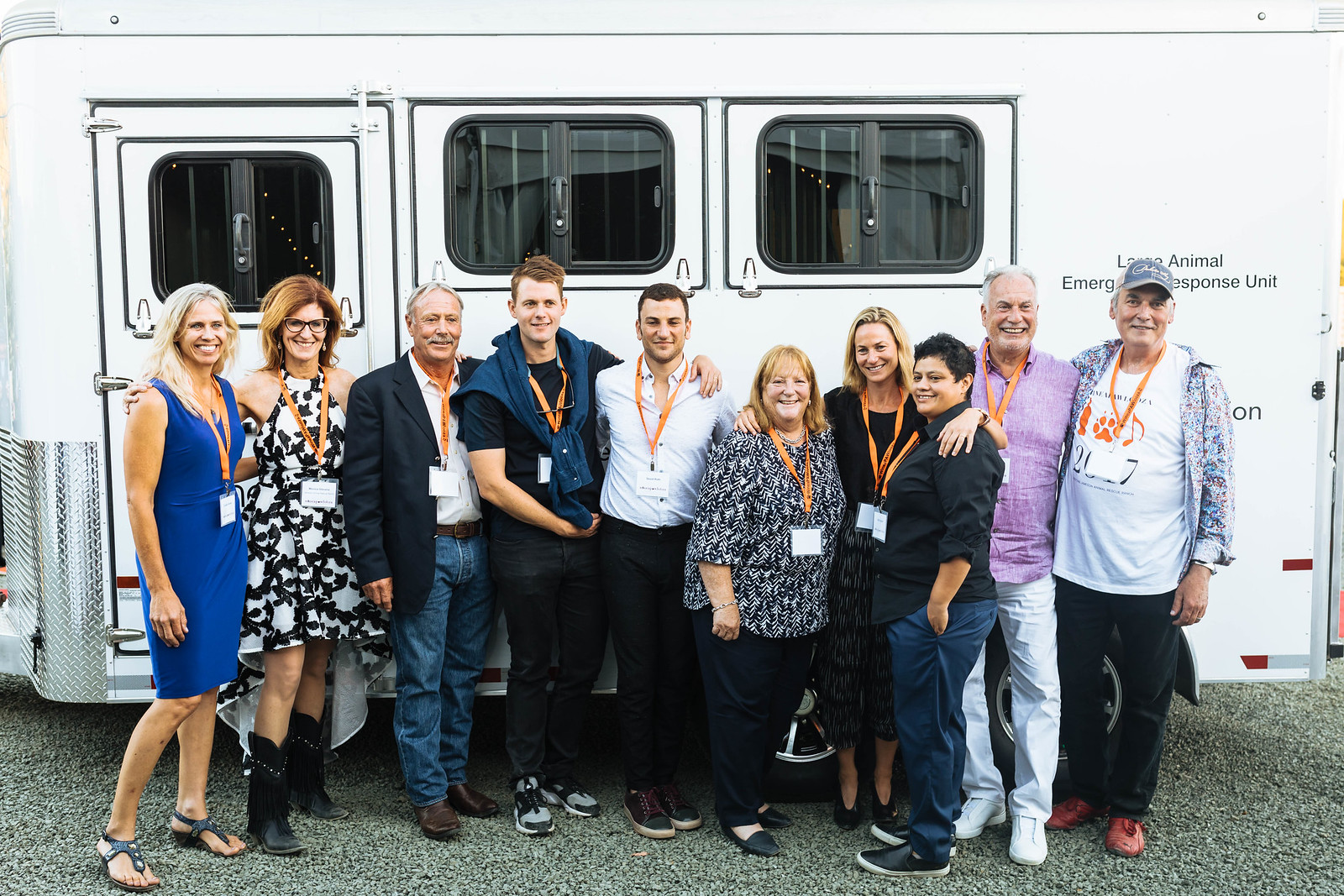
Pictured: The Roth Family with Jameson Humane’s Founders and Other Supporters
Please Make a Donation to Support RFFCAAP
Jameson would be so grateful for your donations in support of RFFCAAP in any amount. Please select the preferred donation method through this link: https://www.jamesonanimalrescueranch.org/donate/donation
RFFCAAP Enables People to Support Animals
- Provides grants for emergency veterinary services
- Provides grants to defray the cost of pet food and supplies
- Provides grants for behavioral training of animals
- Provides grants for low-cost spay/neuter services
- Provides grants to pay pet deposits required by residential facilities, especially when people must relocate due to unexpected circumstances
- Provides referrals for temporary fostering in domestic violence cases
- Provides assistance in the process of rehoming animals who must be surrendered, by posting information about the animal on Jameson’s social media sites, leveraging Jameson’s network of more than 40,000 followers
RFFCAAP Resources and Procedures
The RFFCAAP Support Application for grant assistance can be found, filled out and submitted online here: https://service.sheltermanager.com/asmservice?account=az1802&method=online_form_html&formid=61
Lorie Smith is the primary point of contact for applicants. Lorie is the Helpline Team Member who reviews applications for eligibility, with input as needed from others at Jameson.
Applicants may be eligible for grants up to $100 per animal per year (or perhaps more if a case-by-case review of circumstances warrants it). To be awarded a grant for the expense of veterinary and related services, applicants must establish a financial need either by applying for CareCredit and providing documentation of denial of such credit (or proof of an existing CareCredit account that has been maxed out), or by providing proof that the applicant has a Golden State Advantage Card reflecting eligibility for food stamps.
For the following types of assistance through the RFFCAAP system, applicants need not satisfy the financial need requirements:
- Behavioral training
- Landlord required pet deposit
- Food and supplies
- Temporary foster in domestic violence cases
If you seek guidance in applying for a grant, or if you need another type of assistance, please email Jameson Humane/RFFCAAP at
Helpinganimals@jamesonhumane.org
You can also explore the online Help Center at: https://www.jamesonanimalrescueranch.org/resources
If you need help rehoming an animal, check out the Jameson re-homing resource pages at: https://www.jamesonanimalrescueranch.org/resources/re-home_an_animal
Examples of RFFCAAP Success Stories
Jameson estimates that RFFCAAP has benefitted more than 7,000 animals and their human caretakers through the years. Here are a few examples of the many success stories that have been written by RFFCAAP just in recent months.
- Cristy’s Cat, Shadow, Underwent Life-Saving Surgery With Jameson’s Grant Aid
Cristy applied for and received a RFFCAAP grant, which was paid to a veterinarian to defray the cost of surgery needed by Cristy’s longtime feline friend. After a successful surgery, Cristy gave heartfelt thanks to Jameson and RFFCAAP:
“I am forever grateful for the help I received from Jameson Humane. Shadow is 17 years old and has been my baby since he was 4 years old. When Shadow developed a large mass in his ear, I thought I was going to have to lose my boy due to not having funds for surgery to remove the mass. However, Jameson Humane quickly stepped in and approved funds to help fill the gap I needed for Shadow’s surgery. Shadow has since been recovering well from his surgery that took place last week. He is enjoying cuddles and love from not only me but also his two feline siblings, who are very attached to him. Jameson Humane helped give me more years with my beloved Shadow, and for that I am forever grateful!”
- With Jameson’s Help, Sylvia Was Able to Have Her Dogs Examined and Vaccinated
Sylvia initially contacted Jameson to request food from Jameson for her two dogs. Jameson provided information on its upcoming Pet Pantry events where Jameson distributes pet food out to anyone who drives to the site of the Pantry, and gave her information about similar pet food opportunities closer to her home in Contra Costa County. Sylvia also needed to have her dogs examined and vaccinated. She applied and qualified for a RFFCAAP grant. She traveled well over 100 miles from and to her home to have her dogs examined and vaccinated using the RFFCAAP grant. She was extremely thankful for Jameson’s help.
- Kelly Was Able to Find a New Home for Jinx the Cat Through Jameson’s Posting on Its Social Media Sites
Using Jameson’s online courtesy post offering, Kelly requested Jameson’s help to find a new home for the cat of a recently deceased neighbor. Through Jameson’s post on social media, Kelly took advantage of Jameson’s huge following and found a new “forever” home for Jinx.
- Tiffany’s Chihuahua Was Able to Have a Kidney Tumor Removed Using an RFFCAAP Grant
All the way from her home in Kansas, Tiffany applied for and received a RFFCAAP grant to take her dear elderly chihuahua Spice to the vet to have a growth on Spice’s kidney removed. The surgery was a success and Tiffany wrote back to the Helpline thanking Jameson Humane for helping to save Spice’s life!
- Bessie Received a Grant to Have a Feral Cat Neutered and Treated for Injuries
Bessie from Lake County requested and received an RFFCAAP grant to have a feral cat, which she had been feeding and caring for, neutered and treated for injuries suffered after one of his many fights with other cats in the area. She requested a grant to be paid to a veterinarian to have the cat neutered and to have a couple of his wounds addressed. Bessie drove over a 100 miles round trip to Napa to have the cat treated.
- RFFCAAP Paid Most of the Cost of a Pet Deposit Required by a Family’s New Landlord
RFFCAAP paid about 70% of a rental home pet deposit required by the new landlord of a family in Napa. The family of five had been living with relatives during the past year or more, while they saved up to be able to afford to rent a home in Napa. But in order to include the family’s dog in the move, they were required by the landlord to pay a hefty pet deposit. The mother contacted the RFFCAAP Helpline and received a grant for the majority of the deposit. It meant so much to the family to be able to keep their dog!
Please Give
Again, it would mean the world to Jameson Humane and the Roth Family Foundation to receive donations in any amounts to support RFFCAAP.
https://www.jamesonanimalrescueranch.org/donate/donation
Thank you.
Eleven Rescued Horses Are Livin’ the Equine Dream of a Leisurely Retirement at Jameson Humane
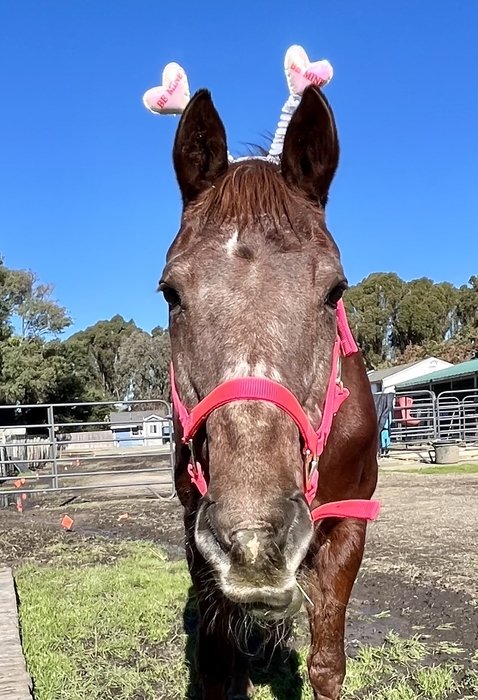
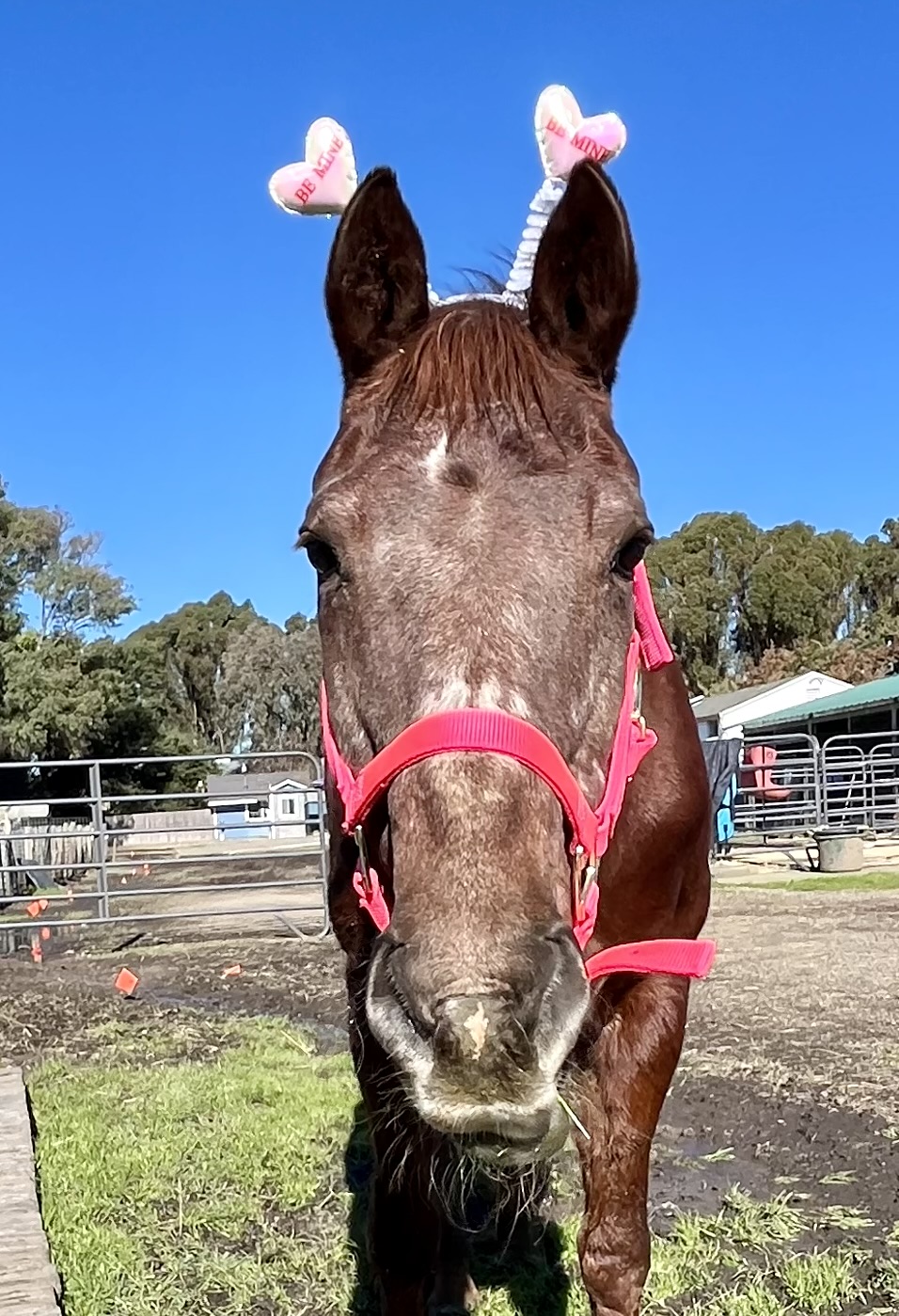
By Jeffrey Richard, Jameson Humane Volunteer
Jameson Humane and other rescue organizations in and around Napa County cooperate and coordinate to rescue and care for neglected, abused or unwanted horses. Eleven horses now live on Jameson’s Los Carneros ranch property and are so happy they do! Why? Because Jameson’s staff and dedicated volunteers provide these horses with loving care, companionship, and all the comforts of retirement.
Dawn English left a career in property management and moved to Napa several years ago to undertake a second career in animal welfare. Dawn is now the Equine Manager at Jameson, and supervises another staff member and 8 volunteers who help care for the stable of 11 horses (9 full-sized and 2 minis). The care, feeding, and attention necessary for the 11 horses takes up about 8 person-hours per day, seven days a week. A typical 8-hour day of caring for the horses involves the following:
- Presoaking breakfast for Lola
- Feeding breakfast to all horses
- Checking/cleaning and filling their drinking water
- Picking up poop
- Presoaking lunch for the seniors
- Grooming all of the horses
- Fly spraying
- Checking hooves and removing objects/debris
- Taking them out for grazing or exercise
- Feeding lunch
- Checking their water again
- Administering medications and supplements
- Presoaking dinner for seniors
- Picking up poop again
- Feeding dinner
- Topping off waters
- Cleaning up/putting away supplies, buckets, etc.
- Supervising volunteers, including oversight of volunteers when they take horses out to gain experience working them.
Dawn and her team are justifiably proud of the results of their care for the horses, of what they have done to meet the special needs of all the horses, and their efforts to make the horses more sociable, approachable and manageable by staff and volunteers. But most of the 11 horses have suffered a variety of hardships in the past and came to Jameson psychologically and physically injured and neglected. And due to their physical impairments or age, they cannot be ridden or expected to do any work.
As a result, even though Jameson’s care for them has yielded remarkable improvement in the horses’ conditions and socialization, for the most part they still would not be candidates for adoption. Dawn English: “It is not realistic to think we can find homes for them all. All of them have special needs, diets, or medical conditions.”
Nevertheless, according to Dawn, it should be recognized that older horses or those with physical or emotional challenges “deserve a place to retire and live out their senior years in a pleasant, loving atmosphere.”
The following describes just a few of the stable mates, the challenges Jameson faces in caring for them, and their progress under Jameson’s care.
The Family of Lola, Magnus and Dharma
Although rescued at different times and for different reasons, it turns out that Jameson has three generations of horses from the same family in its stable. Lola is a mare in her mid-20’s and is Jameson’s most recent equine rescue. A concerned member of the public had seen Lola in a terribly underweight condition and tried without success to persuade Lola’s owner to surrender her to a rescue organization. The owner was reluctant to do so but Jameson stepped in and was able to convince the owner to give Lola up. When she was rescued last August, Lola was in dire need of nourishment. On a bodyweight scale of 1 to 10, her weight registered at 1.5. Jameson’s staff and volunteers nursed Lola back to a good weight. People are amazed at how she has been restored to health under Jameson’s care.
Jameson’s staff learned from an acquaintance of Jameson’s co-founder Monica Steven that Lola is the mother of another horse under Jameson’s care – Magnus – and the grandmother of yet another horse at Jameson, Dharma.
Lola’s grandson Dharma turned two-years old in February and is Jameson’s youngest horse. Dharma is still a baby but is doing great with his continued training. Since he is a little unpredictable due to his age, volunteers are only allowed to interact with him while Dawn is present so she can correct any unwanted behaviors. As of now, his veterinarian has indicated that Dharma will likely never be rideable due to his multiple heart murmurs.
Lola’s son Magnus is a gelding now but still exhibits stallion-like behavior when around other horses. Dawn English is making progress with Magnus by using essential oils and body wraps along with other training to help relax him.
Tubbs
Tubbs is another horse who presents behavioral challenges. As described in her staff bio piece on the Jameson website, Dawn English “enjoys the challenge of working with and building relationships with horses that are wary of humans, no matter the length of time it takes. One such example is Tubbs . . . Tubbs has shown an amazing transformation with Dawn, from being fearful of her touch to building a sweet, trusting bond and enjoying Dawn’s presence. Dawn has employed essential oils and bodywork for emotional and physical healing in horses and humans with great success.”
Izzy
In our January 2024 blog, we described some of the animals at Jameson and the circumstances of their rescues. One horse covered in that article was Izzy, a paint in her mid-20s. She was rescued from a Texas horse auction in late 2022. At the time she was rescued, Izzy had been sadly neglected and was very poor condition – on the brink of death, severely underweight, nervous, and unable to see out of one eye. Although still shy (and blind in one eye), Izzy is a sweet, gentle soul who has been restored to health through the loving efforts of Jameson staff and veterinary care.
Molly
Molly is a 21-year-old quarter horse mare. Molly was rescued from a situation where she had been neglected and had never been handled. She was extremely nervous and frightened by contact with people when she first arrived. But the care she has received at Jameson has paid off. Molly now accepts and enjoys a halter, grooming and attention. She feels confident enough around people she knows to approach them at the gate and welcomes their attention, petting, and (of course) treats!
Meet the Adoptable Farmed Animals Rescued by Jameson Humane


Meet the Farmed Animals Rescued by Jameson Humane Who Are Available for Adoption or Foster Care
By Jeffrey Richard, Jameson Humane Volunteer
Jameson Humane rescues and nurtures farmed animals who might otherwise end up as fodder for butchers, clothing manufacturers, and leather furniture upholsterers. A number of those animals are great candidates for adoption or fostering by a lucky person with the space to accommodate one (or a few!) of them. By adopting such an animal or fostering on a temporary or foster-to-adopt basis, the adoptive or foster guardian would help Jameson Humane continue its great work by making more room and care capacity for future rescues at Jameson’s facility. And as we previously discussed in connection with the rewards of fostering and adopting cats (March 2024 Blog), the adoptive parent or foster guardian can look forward to many intangible, but very real, benefits to their frame of mind and emotional health to be derived from caring for an animal such as a pig or a cow!
How to Adopt or Foster One of Jameson’s Farmed Animals
Jared Krimsky is Jameson’s Manager of Animal Healing and Development. Jared reviews adoption and foster care applications for Jameson’s farmed animals, conducts a site visit to assess the suitability of an applicant’s space for the animal in question, and conducts bi-monthly progress checks after adoption or fostering to ensure that everything goes smoothly with the placement and care of the animal.
Jameson provides ample support to foster guardians. Jameson pays for all food and medical costs incurred by foster guardians. And depending on the circumstances, Jameson may continue to help with medical costs after adoption.
Jameson’s online description of the adoption process can be found here: https://www.jamesonhuymane.org/adoption-process The key steps in adopting a farmed animal are described as follows:
- Contact Jared Krimsky to let us know which farmed animal(s) you are interested in.
- Complete an adoption application and return to Jared.
- Upon approval of an application, we will arrange for your entire family to meet the farmed animal(s).
- A home check is scheduled and then the adoption contract is completed and an adoption fee is paid (Blogger’s note: this may vary or be waived depending on the circumstances).
If you have any questions, please feel free to contact Jared Krimsky at:
The Animal Foster Application can be found here.
Which Farmed Animals Are Available for Adoption or Foster Care?
Presently, there are five pigs and four cows who would be perfectly suited to adoption or foster care, according to Jared Krimsky. These top candidates for adoption are described below. But please note that Jameson has other animals that are eligible for adoption or foster care that require a bit more experience, on the part of potential guardians, in handling such animals.
Pigs
A total of five pigs at Jameson are best-suited to adoption. Four of the five comprise two sets of bonded pairs who would have to be adopted or fostered together.
Jared Krimsky describes the first bonded pair of Poppy and Tulip as follows: "These two wonderful ladies are six-year-old sisters who are full of personality! They love both people and animals, and are very gentle with all. They do enjoy being with you and are not shy about coming into your personal space. As a result, and since they are full-sized pigs, they are best suited for adoption or fostering by someone with plenty of outdoor space and the ability to provide ample attention.”
Petunia and her son Cowlick are the second bonded pair of pigs available for adoption. Petunia is a sister of Poppy and Tulip. Jared Krimsky describes Petunia and Cowlick as follows: “Petunia arrived at Jameson pregnant and later gave birth to four piglets, including Cowlick. Cowlick’s three siblings live together and are less mild-mannered than he and his mom are.
“Petunia likes to decorate with sticks and will create a beautiful display for you and the whole block to enjoy. She also has the most beautiful blue eyes you'll ever see!
“Any potential foster guardian or adoptive parent should be aware that Cowlick is upwards of 600 pounds and thinks he’s a lapdog; he has flopped for a belly rub directly onto my legs more than once. Cowlick means well! He is only four years old and his mom Petunia is around six.
“Petunia and Cowlick are among the sweetest and gentlest big pigs I’ve ever met. They love human companionship. I am currently having some pig-loving volunteers spend time with them, including lying down with them to bolster their socialization. These two pigs just love human interaction! They would be low-maintenance pigs to a foster home or adoptive family but need plenty of outdoor space. They would not be suitable for the indoors.”
Jared Krimsky: “Oscar is around four years-old. He is a Vietnamese/Kune mix and is known around Jameson for being a very good boy. He is trained to sit like a dog, and knows other commands such as “Go Home!” which will send him running excitedly towards his yard. He’s also known for being what we call ‘soft mouthed,’ which means you can hand feed him and he’ll never accidentally nip your fingers. I’ve found that you can even put your finger in his mouth without fear of being bitten. Oscar is a bit shy, and it takes him a while to warm up to new people. But he’s the cutest and smallest pig on Jameson’s property. We’ve been doing halter training, which will make him an even better companion.”
Cows
Two bonded pairs of cows are available for fostering or adoption:
Black Beauty and Willy are particularly good candidates for adoption because they are young, friendly and adorable. Black Beauty, a dwarf Black Angus, and Willy, a miniature Hereford, were rescued by Jameson’s Volunteer Manager, Jennifer Romanek. Once they arrived at Jameson, it didn’t take long for them to become favorites for their big eyes and easy-going nature. One of their biggest sources of enjoyment is to eat sweet grain from a “bump” feeder. The cows bump the container, which then rains grain down – sometimes onto Willy’s head! Black Beauty supplements her share by licking the stray grain from Willy’s head. This doesn’t seem to bother Willy, but his forehead looks very funny afterward (as you can see in the photo below).”
Mother and son Angus/Wagyu cross cows, Delilah and Duke, are available for adoption as a bonded pair. Duke is 10-years-old and was raised as a bottle baby by his previous family’s children. Delilah, now a 12-year-old, initially rejected Duke when he was a newborn calf. But once they were reintroduced, they became inseparable! Any prospective adoptive guardian should understand that, given the somewhat advanced ages of these cows, although they are both healthy, they may have remaining life expectances that will range anywhere from one to perhaps ten years.
The Benefits of Fostering - Become a Foster Guardian Today!


Help Jameson Humane by Serving as a Temporary Foster Guardian for an Adult Cat or Kitten
By Jeffrey Richard, Jameson Humane Volunteer
Jameson Humane rescues and cares for many cats and kittens and always needs foster homes to support Jameson’s adoption program. Please consider fostering a cat for either a brief window of time, or longer, to help Jameson, particularly for those cats who need a soft place to land and transition while in their senior years.
There are many benefits to fostering, both for the cats and to their foster guardians. Perhaps you have been thinking about becoming a short-term foster guardian for a cat already? If you work from home or have the space to take care of a cat, and if you think you would enjoy having a cat companion (and receive the emotional, psychological, and even physical benefits discussed below), then you may be interested in finding out more about Jameson’s foster program and the support that Jameson provides to foster guardians. For more information, please contact Jameson’s Companion Animal Program Manager, Jaime Vega, by email at jaime@jamesonhumane.org
Fostering cats is a wonderful and fulfilling act of generosity, which yields a Win-Win-Win – for the cat, for the foster guardian, and for the rescue organization that has sheltered and cared for the cat. When someone brings a foster cat into their home, they help socialize the cat and prepare it for adoption. At the same time, the act of fostering a cat brings many emotional and psychological benefits to the foster caregiver, while allowing them to help out without making the sort of commitment for the life of the cat that adoption entails. Finally, every time a cat goes into a foster home, this not only furthers the rescue organization’s mission of improving the quality of life of the animals in its care, but also helps the rescue by making room for other cats who may have a critical need for their care and attention.
Jameson Humane’s Foster Program
Information about Jameson’s foster program can be found here. There are two easy steps to becoming a foster guardian for cats rescued or cared for by Jameson Humane. The first step is to fill out Jameson’s animal foster application. The application is linked on the Jameson Humane webpage noted above, and can also be found here.
The second step to foster a cat currently in Jameson’s care is to allow a home visit. Jaime Vega (Companion Animal Program manager) explains, “A home visit is a great opportunity for us to get to meet the foster guardian, ensure the home is safe and secure for any future foster animal. It is also extremely helpful in getting to know the home layout as well as any resident animals to further pair any needs in the future.”
According to Mr. Vega, fostering timelines vary, based both on Jameson’s needs at the time, the individual cat’s specific situation and temperament, and the foster guardian’s schedule and availability. Fostering timelines can range from emergency placements of 24 hours, to fostering for a specific period of weeks or months, to a more open-ended period of fostering up until the animal is adopted. Jameson’s fostering opportunities are very flexible and dependent upon the foster guardian’s availability.
Foster guardians receive financial support from Jameson. For all foster animals, Jameson provides all the essential food, supplies, medical care, and any other necessities. (Foster guardians are always welcome to supplement as they wish.) Foster caregivers are also given priority when it comes to adopting their foster animal. And adoption fees are waived for current fosters.
If changes occur and the foster guardian is no longer able to continue with the cat in their home, Jameson readily cooperates with the transition and either places the cat in another foster home or accepts the cat back into Jameson’s facility and care. Jameson recognizes that circumstances can arise which call for a change, but is most appreciative if notice of one week or more is given.
Jameson enjoys working with its foster guardians and values their ability to help facilitate permanent placements for foster cats. For a prospective adopter wishing to meet a foster animal, “meet and greets” are held at the foster caregiver’s home – with their approval and coordination of course. Foster guardians are great adoption ambassadors as they know their foster animal best and can help make adoption candidates feel comfortable with their choice of their new family member!
How Do Cats Benefit From Foster Care?
FelineFoster.org describes why foster care is so beneficial to cats who are currently in the care of a rescue or shelter:
A foster home is a bridge from a cat’s former life to their new life with a forever family. . . . An environment that feels like home instead of a shelter, is usually best for cats. Cats, like people, need a place to feel safe; a place where they can let their guard down and relax, where they don’t have to worry about where the next meal will come from, what other animal might challenge them in the night, or if they will be warm and dry. Many cats have been neglected or abused and don’t know what a loving home feels like. Foster families help them learn what it’s like to eat, sleep and play in a safe space. Foster homes play an important role in caring for cats in an often-overburdened system.
The FelineFoster article goes on to describe the cats and kittens that are most benefitted from finding a temporary foster home:
Neonates: These fragile lives need round the clock care that many organizations are unable to offer. There may be special training needed in order to provide special care.
Young Kittens: Helping these toddlers learn to walk and play can be a nonstop source of laughter! As these fur kids develop, they need a safe place to learn manners and grow up healthy in order to become the best family members they can be.
Cats in Need of Medical Recovery: Every day shelters are inundated with cats that are sick and injured. Foster care often speeds up the process by providing a quiet, restful place to heal. You can use this time to get to know your foster cat, help find them a forever home, and raise awareness about your shelter’s medical program.
Over-Stressed Cats: Imagine that you lost your family and home and found yourself sitting in a kennel. You used to have a whole home, people that gave you treats and toys, and now you have a small, rectangular cage where you spend 20 or more hours a day surrounded by barks and meows and a parade of people passing by. Some cats just cannot adapt and begin to emotionally break down. Short-term foster care is like a vacation when you are stressed, and long-term foster care is a more humane way for cats to spend this transitional period from former home to new, forever family.
Emergency: During times of crisis, shelters may be overwhelmed with cats in need. Emergency fosters pledge to step up and provide a temporary safe space to alleviate the need for shelters to create space through euthanasia. This may be during an extreme weather event like a hurricane, a sudden expansive wildfire, or even, a pandemic.
Cats Shelters Need to Learn More About: There are some things that organizations just can’t learn about a pet in the shelter. The role of the foster caregiver is to learn as much as possible about the cat in their care, and share that information with the shelter/rescue group, and all the friends and family you know, in order to make a great match with their new forever home.
Hospice Cats: No pet should spend the end of their life in an impersonal shelter environment. As great as your local shelter may be, a home is typically better. A fospice (foster/hospice) home keeps a kitty comfortable, for as long as they can, until they can’t. Many times, a cat who was predicted to have weeks left, ends up sticking around longer due to the love and care they receive in a foster home.
How Do Foster Guardians Benefit From Providing Cats a Temporary Home?
Foster guardians for cats derive well-recognized psychological, emotional and physical benefits from having them in their home. Even when cats are fostered for only a short period of time, they can fulfill a foster guardian’s need for companionship, serve to ease loneliness, reduce anxiety, and trigger relaxation. And, depending on the personality of the foster cat, the caregiver may derive joy and feelings of lightness from interacting with playful and affectionate animals.
Furthermore, providing a home and companionship for animals may provide caregivers with a renewed sense of purpose and personal satisfaction in knowing they are improving the quality of life of another sentient being. In fact, caring for cats and other animals in need may bolster self-esteem and bestow a sense of accomplishment. Fostering a cat will provide the caregiver with an opportunity to feel and demonstrate empathy. And, in turn, experiencing that emotion will often boost the caregiver’s feelings of self-worth and result in recognition of the intrinsic value of compassion.
According to a 2020 article about the health benefits of animal companionship on the website of the senior-support organization, Barclay Friends, having animal companions at home:
- Lowered cortisol, a stress hormone, and increased serotonin and dopamine, hormones associated with happiness and well-being
- Lowered blood pressure, heart rate and serum triglycerides
- Increased daily exercise in petting, lifting, grooming . . .
- Lowered risk of depression and stress-induced disease.
“Seniors and Pets, A Pawsome Combination,”
In an article written for the Preventive Vet website entitled “Foster Cats 101: Why You Should Consider Fostering a Cat,” LeeAnna Buis, CFTBS, FFCP, describes the emotional and physical benefits she derives from fostering cats in ways that echo the discussion above. Ms. Buis explains why she is a foster guardian:
I grew up in a household where any animal in need of care was welcome. It was a revolving door of stray cats, dogs whose owners couldn’t keep them, injured, wild this and that, and once, a pregnant spaniel found wandering the desert, who soon gave birth to 14 puppies! It certainly wasn’t easy for my mother to manage and care for all these critters. But she never said no. Well, occasionally, she said no, but never really meant it.
When I moved out on my own, I knew I wanted to continue supporting animals in need, the way my family had. My plan was to buy a house and dedicate a spare room solely to fostering cats. It took a while, but I finally did it. I lovingly call it the Foster Suite. And it has been my absolute joy.
People often choose to foster a cat before making a decision to adopt. By fostering a cat, they can experience the upside benefits (which as discussed above, are substantial) as well as any downside such as the time commitment to properly care for the cat and any lifestyle changes or restrictions that may result from having a cat at home. Fostering allows the guardian to weigh these pros and cons without making the long-term commitment that comes with adoption.
Meet the Farmed Animals of Veganuary!


Meet the Farmed Animals Rescued by Jameson Humane Who Benefit From The Principles of Veganism and Veganuary
By Jeffrey Richard, Jameson Humane Volunteer
Veganuary is an annual global campaign that celebrates the equal dignity and value of all living creatures. Veganuary’s goal is to create a kinder, more compassionate world where animals are not bred for slaughter or for products that damage our environment and our health. As we said in our blog article last January,[1] Veganuary is a great chance to explore an alternative way of eating, and to experience first-hand how each of us can have a positive impact on the world around us simply by making small changes to how we eat and what we wear, and by fully appreciating and respecting animals as sentient beings.
Among its many good works, Jameson Humane rescues and nurtures farmed animals who might otherwise end up as fodder for butchers, clothing manufacturers, and leather furniture upholsterers. Presented below are the stories of just a few of those horses, pigs, cows, sheep and chickens saved from cruel-hearted exploitation by those seeking commercial gain. Veganuary is a good time to get to know them and to appreciate their rightful place in the world as breathing, thinking, and feeling individuals. Through efforts like the Veganuary campaign, we can give these wonderful creatures a chance to live long, peaceful lives in a compassionate world.
Izzy

Izzy is a 20-year-old Quarterhorse/Paint mix mare. She and her pal Melly found a home at Jameson Humane after being rescued from a Texas horse auction about 14 months ago. According to the Humane Society of the United States:
“Hundreds of horse auctions are held each year, in virtually every state. Thousands of horses are auctioned each year, including healthy pleasure horses and ponies, former race horses, draft horses, donkeys, mules, and even wild horses. . . .
While some people looking for inexpensive riding horses and ponies purchase them at auction, the majority of horses sold at auctions attended by HSUS staff were purchased by ‘killer buyers’ who represent or sell to horse slaughterhouses.”
At the time she was rescued, Izzy had been sadly neglected and was in very poor condition – on the brink of death, severely underweight, nervous, and unable to see out of one eye. Although still shy (and blind in one eye), Izzy has been restored to health through the loving efforts of Jameson staff and veterinary care. She is a sweet, gentle soul who has been saved by the compassion of those who rescued her and by the care of Jameson staff and volunteers.
By the way, horses adapt well to the loss of sight in one eye. In an article for the United States Equestrian Federation, Dr. Rana Bozorgmanesh notes that “There are a lot of horses out there living happy lives with only one eye, and they can still do a lot.” https://www.usef.org/media/equestrian-weekly/your-horse-has-uveitis-heres-what-you-need-to#
Melly

Izzy’s friend Melly is a 19-year old Tennessee Walker mare who was rescued from the same Texas horse auction in November, 2022.
As with Izzy, Melly arrived at Jameson in very fragile shape, weak and barely strong enough to stand up. Melly loves to talk and enjoys snacking. She and Izzy continue to enjoy each other’s company.
Molly

Molly is a 20-year-old Paint mare who was also rescued from a Texas horse auction a little over a year ago. Jameson staff found that Molly had never been trained to be handled by people or haltered at all. So, she was extremely nervous and frightened by contact with people when she first arrived. But she has made great progress and has responded well to the loving care of Jameson. She feels confident enough around people she knows to approach them at the gate and welcomes their attention, petting, and (of course) treats!
One fun fact about horses: anyone who’s had much experience with horses knows that they are able to use their mouths for many purposes, including opening latches and other gate enclosures, making them “flight risks!” The prehensile lips of horses allow them “to pick up very small or fine items with great precision and dexterity and move the items into the oral cavity for processing. The lips are incredibly sensitive and can discriminate with mind-boggling accuracy. Any owner who has tried to medicate their horse through feed knows this. How does that animal manage to sift through the medication and take only the feed?! Blame the prehensile lips.” (From the article by Mary DeLorey, DVM, “Why Dental Care,” https://www.healthymouth.com/Articles.asp?ID=271#:~:text )
Tulip, Poppy, & Petunia

Tulip, Poppy and Petunia, triplets named after beautiful flowers, are lovely inside and out! These three were saved along with their three brothers by an amazing kid in Sonoma. He convinced the rancher to surrender their pregnant mother to a rescue so that the babies would have a fighting chance. The three boys went to Charlie's Acres farm sanctuary in Sonoma and the three girls to Jameson. "Two-Tone" Tulip is sneaky and likes to fit as many apple chunks as possible in her mouth and hide them from her sisters for later. Poppy is sweet and loves to be in the company of humans. Have you ever heard of a lap pig? Well Poppy is your girl! Petunia likes to decorate with sticks and will create a beautiful display for you and the whole block to enjoy. She also has the most beautiful blue eyes you'll ever see! In the heat of summer, they enjoy cooling off in a bit of mud. In the cold of winter, they prefer their matching jackets to stay warm.
Ziggy

Ziggy is a gentle, 7-year-old porcine with a sweet temperament, good heart and huge ears! He’s a nice guy who loves bobbing for apples in his water trough. Pigs like Ziggy show their affectionate side, according to PigBox.com, in a number of ways:
“1. Kissing
When a pig presses its snout against you or another pig, it’s a sign of endearment! . . .
“2. Cuddling
Pigs can be HUGE cuddle bugs, especially when they want to show some love. If you keep your pig purely as a house pet, your pig may even begin cuddling with your other pets! . . .
“3. Smiling
It’s true, pigs smile too! They are actually very expressive animals, and their smiles are sure to turn any frown upside down. You’ll typically see a smile when your pig is feeling content or happy. If your pig shares a smile when seeing you, your company is wanted and you are very loved!
“4. Grunting
Though your pig may let out a variety of grunts, the soft ones are what we’re talking about for now. When your pig seems content and lets out calm, soft grunts, know they appreciate you! . . .
“5. Tailing
When you just can’t seem to get some space from your pig, there’s probably a lot of love present. Pigs tend to follow people who they admire the attention of and want to be around. . . .”
(https://www.pigbox.com/5-ways-your-pigs-say-i-love-you/ )
Benny

Five-year old Benny fits right into wine country. He loves, loves, loves grapes! In fact, he greatly prefers any type of fruit over vegetables (he usually leaves his greens behind uneaten). Benny is a well-mannered pig who won't eat his food off the floor. Instead, he uses a higher level of dining etiquette, preferring to eat his food from the top of a tub or, better yet, a plate. Benny is a shy guy around humans he doesn't know, and is inclined to hide in a nest of his own construction when someone new comes around. But if you bring him some grapes or another favorite treat, he will be eating out of your palm in no time!
Black Beauty and Willy

Inseparable friends, Black Beauty and Willy (both about 6-years old) have indeed found their way into our hearts. Beauty, a dwarf Black Angus, and Willy, a miniature Hereford, were rescued by a kind-hearted woman, Jennifer Romanek – who is now on staff at Jameson as its Volunteer Manager – who saw they were not getting the care they needed. Once they arrived at Jameson, it didn’t take long for them to become favorites for their big eyes and easy-going nature. They love being at Jameson. One of their biggest sources of enjoyment is to eat sweet grain from a “bump” feeder. The cows bump the container, which then rains grain down – sometimes onto Willy’s head! Black Beauty supplements her share by licking the stray grain from Willy’s head. This doesn’t seem to bother Willie, but his forehead looks very funny afterward (as you can see in the photo above).
Duke and Delilah

Mother and son Angus/Wagyu cross cows, Delilah and Duke are living their best lives together at Jameson. Duke is 10-years-old and was raised as a bottle baby by his previous family’s children. Delilah, now a 12-year-old, initially rejected Duke when he was a newborn calf. But once they were reintroduced, they became inseparable! The pair were raised on a beef farm and were intended for the slaughterhouse. But the family that owned the farm became enamored of Duke and Delilah. And the family’s love for the pair led them to give up beef farming. In fact, their daughter gave up eating meat entirely! The family gave up the pair to Jameson Humane, because they felt it was in Duke and Delilah’s best interests to seek Jameson’s help in giving the cows a forever home and pasture in which to graze and roam.
Naomi

Naomi is a 2-year-old babydoll sheep who was injured when she was just a few months old and was unable to stand up or walk on her own. After having been rescued by Jameson, Naomi has received the best care possible, including regular physical therapy and acupuncture. Naomi will likely never be able to stand or walk fully on her own, but with regular physical therapy, healing, and muscle strengthening, she has been able to stand and walk with the help of her little cart with wheels. The team at Jameson is dedicated to giving her the best quality of life possible. She loves her adopted flock members, Lizzie, Norman, and Bucky.
Norman

Norman is a 5-year-old sheep who is a favorite of everyone he meets. He has a big sweet and loving personality. He craves human interaction, attention, scratching and brushing. No one loves apples and carrots more than Norman does. As with little Naomi, Norman has bonded with his flock at Jameson (Naomi, Lizzie, Bucky and Norman).
The Golden Girls Chicken Flock and Rico
 Jameson cares for three senior chickens and a rooster - meet the Golden Girls and Rico! Jameson’s care has benefitted these birds as shown by the fact that they are enjoying longevity far surpassing their breed’s average life expectancy. Chickens are more intelligent than many people think. They are keenly aware of their surroundings and will eagerly investigate and interact with people. They especially like to listen to sounds and they will answer with their repertoire of chirps and clucks. Chickens can even purr! If you spend some time with them, they’ll tell you their life’s story,
or maybe just the latest chicken gossip. They also love all kinds of scents and tastes!
Jameson cares for three senior chickens and a rooster - meet the Golden Girls and Rico! Jameson’s care has benefitted these birds as shown by the fact that they are enjoying longevity far surpassing their breed’s average life expectancy. Chickens are more intelligent than many people think. They are keenly aware of their surroundings and will eagerly investigate and interact with people. They especially like to listen to sounds and they will answer with their repertoire of chirps and clucks. Chickens can even purr! If you spend some time with them, they’ll tell you their life’s story,
or maybe just the latest chicken gossip. They also love all kinds of scents and tastes!
[1] Our January 2023 blog provided information about the global benefits of veganism, as well as resources for enjoyment of vegan cooking. See, “Join Jameson Humane in Celebrating and Experiencing ‘Veganuary,’ January 17, 2023, https://www.jamesonanimalrescueranch.org/news-events/blog/23
